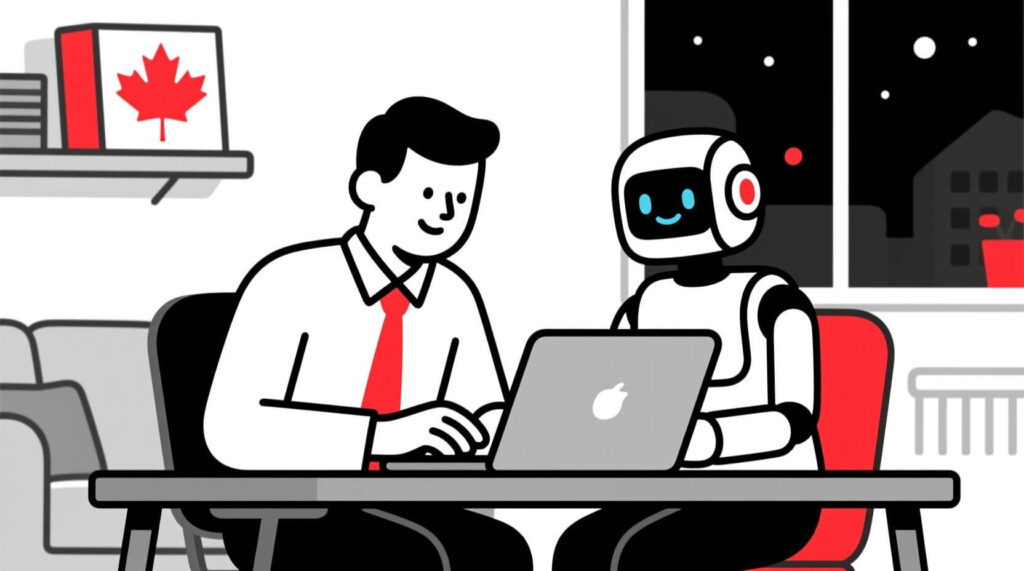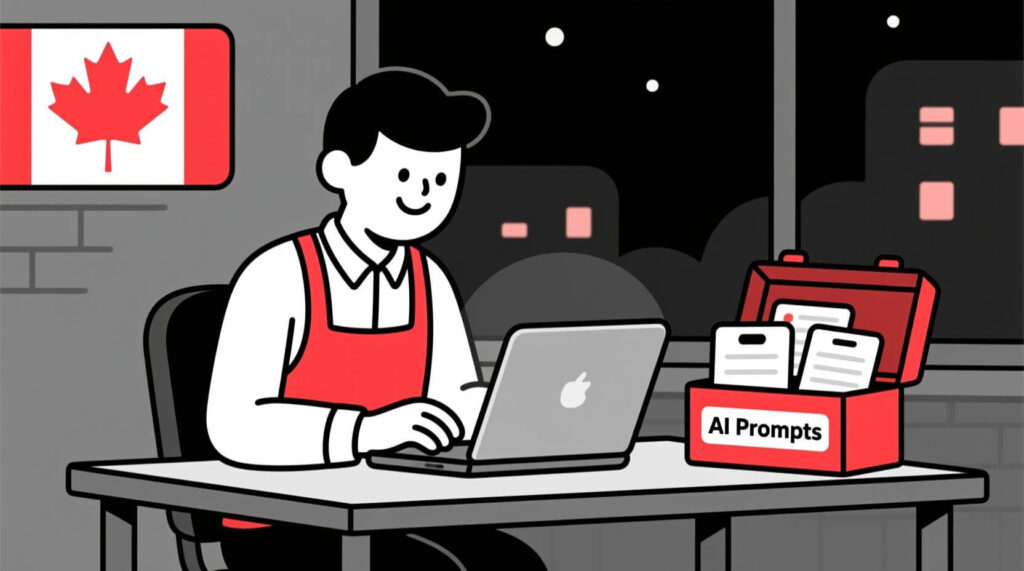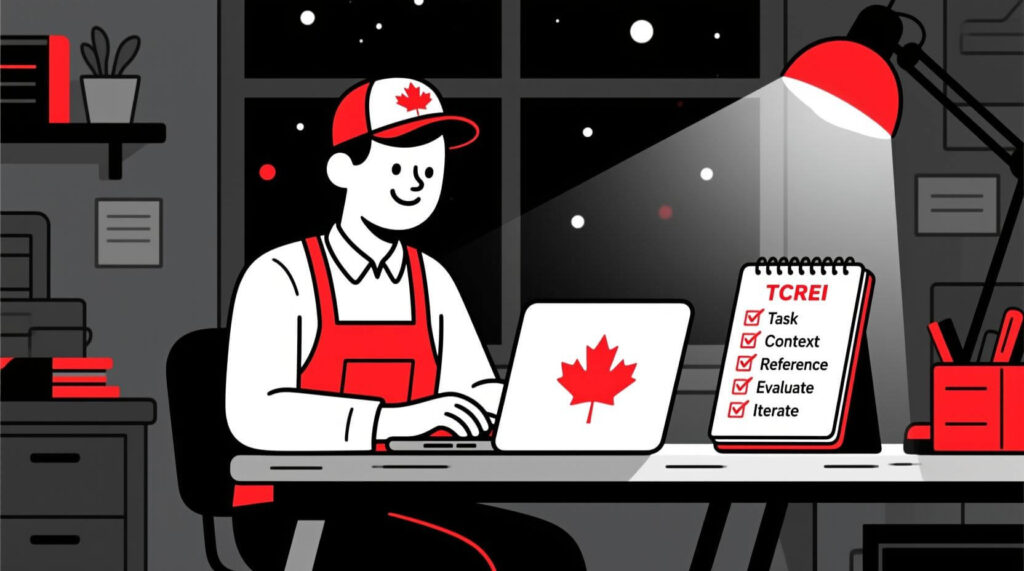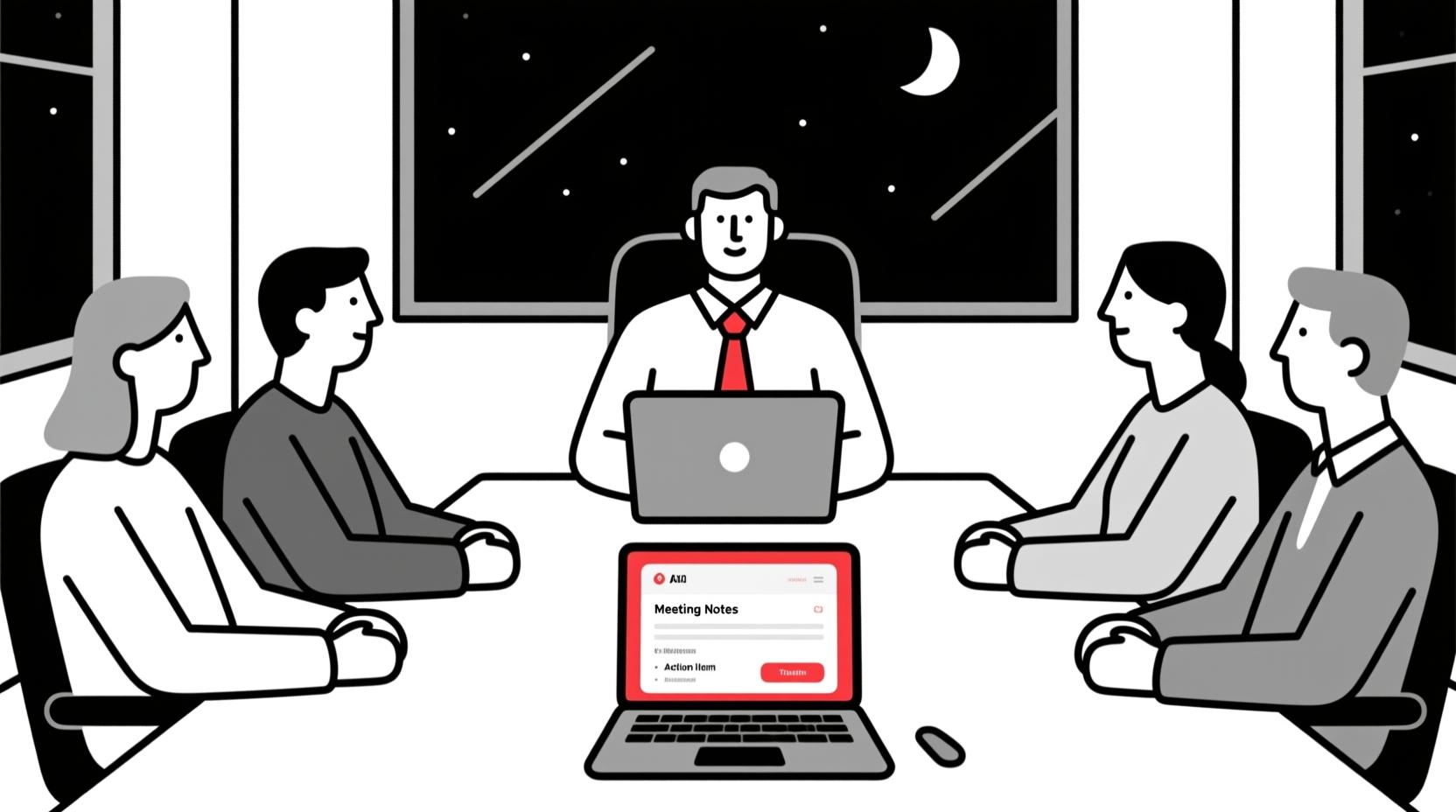
You know the feeling. The meeting ends, and you’re left staring at a notebook full of cryptic scribbles, trying to remember who agreed to do what by when.
This post-meeting haze isn’t just a nuisance; it’s a massive, hidden drain on your organization. Recent data shows that Canadian workers spend nearly 20% of their workweek in meetings. The real kicker? A staggering 54% of employees leave those meetings without a clear idea of what to do next.
This creates a dangerous “accountability gap” where great ideas and critical tasks go to die.
This guide will do more than just help you write notes faster. It will give you a framework to turn your meetings from a source of frustration into an engine for clarity, accountability, and momentum. It’s time to learn the three levels of AI meeting mastery.
The Invisible Taxes Costing Your Non-Profit a Fortune

Before we get to the AI, you need to be able to articulate to your board and team why this matters. Inefficient meetings impose two invisible taxes on your organization:
1. The Productivity Tax: Every unclear action item is a seed of future wasted time. It leads to follow-up emails, confusion, and eventually, another meeting to clarify what the first one was for. This is a direct drain on your most precious resource: your team’s focus.
2. The Culture Tax: This is the deeper, more damaging cost. When expectations are unclear, it creates anxiety. Team members are afraid to act, worried they’ll do the wrong thing. This uncertainty is the enemy of Psychological Safety—that feeling of trust that allows a team to take risks and perform at its best. Clear, documented action items are a gift of clarity that builds trust and reduces stress.
The 3 Levels of AI Meeting Mastery
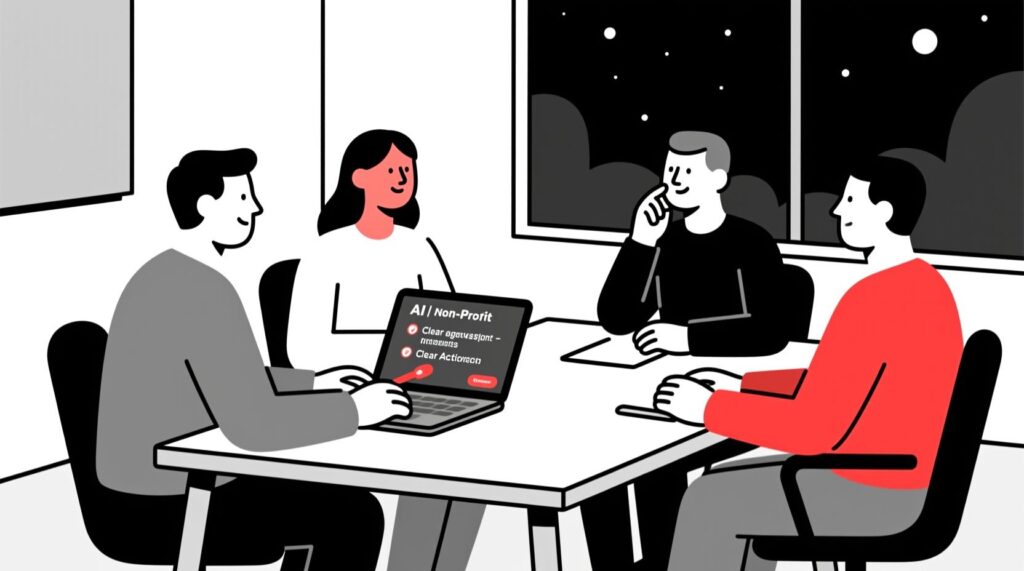
This isn’t just a single trick; it’s a journey. Start at Level 1, and as you get comfortable, you’ll unlock new leadership superpowers.
Level 1: The AI Scribe – From Chaos to Clarity
The Goal: To perfectly capture what was said and decided, closing the accountability gap for good. This is your new foundation.
The Workflow:
- Capture: Record your meeting audio (with consent!) and get an AI-generated transcript using a tool like Otter.ai, Fathom, or the built-in features in Zoom and Teams.
- Synthesize: Feed the transcript into an AI like ChatGPT or Claude with the “Master Accountability” prompt below.
- Distribute: Send the summary within 24 hours and, most importantly, copy the action items into your team’s shared task list.
The “Master Accountability” Prompt:
"Act as my team's project manager. I've pasted a meeting transcript below. Please analyze it and produce a structured summary with these sections: 1. Key Decisions Made; 2. Open Questions; 3. Action Items (in a table with 'Task', 'Owner', and 'Deadline'). Ensure every commitment is captured. Transcript: [Paste transcript here]"Level 2: The AI Analyst – From Notes to Insights
The Goal: To understand the subtext of the meeting. What were the real themes? Where is the team aligned, and where is there tension?
The Workflow: After running your Level 1 prompt, open a new chat and use the cleaned-up transcript with one of these analytical prompts.
The “Insight Generation” Prompt:
"Act as a strategic facilitator. I've pasted a meeting transcript below. Please analyze the discussion and tell me:
1. What were the 2-3 main themes of the conversation?
2. What was the single biggest point of consensus?
3. What was the single biggest point of disagreement or unresolved tension? This is for my strategic review, so be concise and direct. Transcript: [Paste transcript here]"This superpower turns you from a note-taker into an organizational strategist.
Level 3: The AI Coach – From Good to Great Meetings
The Goal: To use AI to get objective feedback on the meeting itself, helping you become a better leader and facilitator. This is the ultimate pro move.
The Workflow: This requires vulnerability, but the payoff is huge. Use the transcript to ask the AI for feedback on the meeting’s dynamics.
The “Meeting Coach” Prompt:
"Act as an executive coach specializing in effective communication. I've pasted a meeting transcript that I led. Please review it and provide gentle, constructive feedback on one specific thing I could do to facilitate an even more effective discussion next time. For example, was there a good balance of speaking time? Did we ask enough open-ended questions? Were we quick to jump to solutions? Transcript: [Paste transcript here]"This level transforms AI from a productivity tool into a professional development partner.
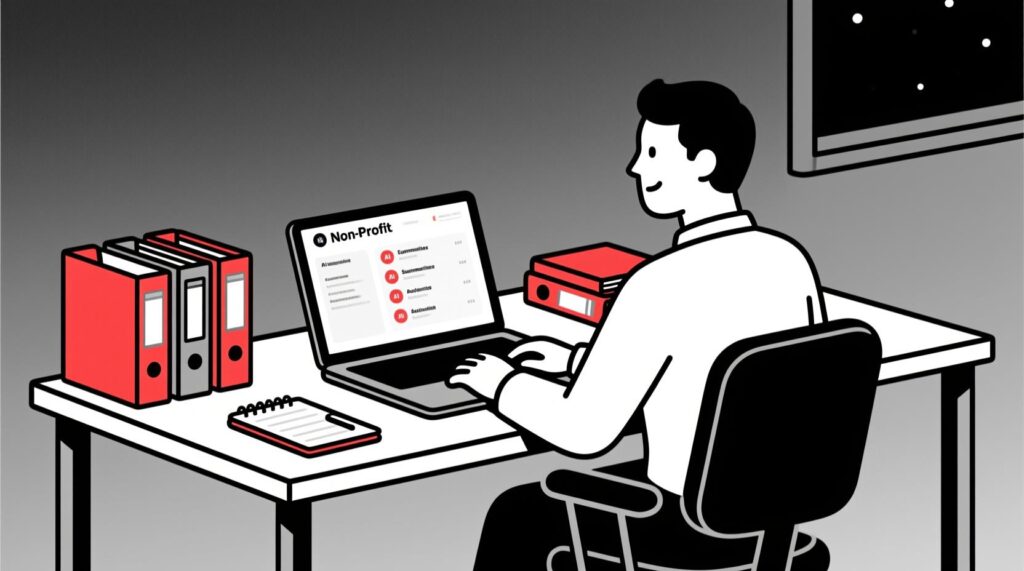
Canadian AI Guy’s Pro Tip: Your AI Meeting Command Centre
Ready to give’r? Here are the essential prompts from all three levels. Save these in a note—this is your new toolkit.
Level 1 – The Scribe:
"Act as my team's project manager. I've pasted a transcript below.
Create a summary with:
1. Key Decisions Made
2. Open Questions
3. Action Items (in a table with 'Task', 'Owner', 'Deadline').
Transcript: [Paste]"Level 2 – The Analyst:
"Act as a strategic facilitator.
Analyze this transcript and identify:
1. The 2-3 main themes
2. The biggest point of consensus
3. The biggest point of unresolved tension.
Transcript: [Paste]"Level 3 – The Coach:
"Act as an executive coach. Review this transcript I led. Provide gentle, constructive feedback on one specific thing I could do to facilitate an even more effective discussion next time.
Transcript: [Paste]"Bonus – The Cleaner:
"Before you analyze, please clean up this raw transcript. Remove all filler words, correct obvious typos, and fix punctuation for readability. Just provide the cleaned text.
Transcript: [Paste]"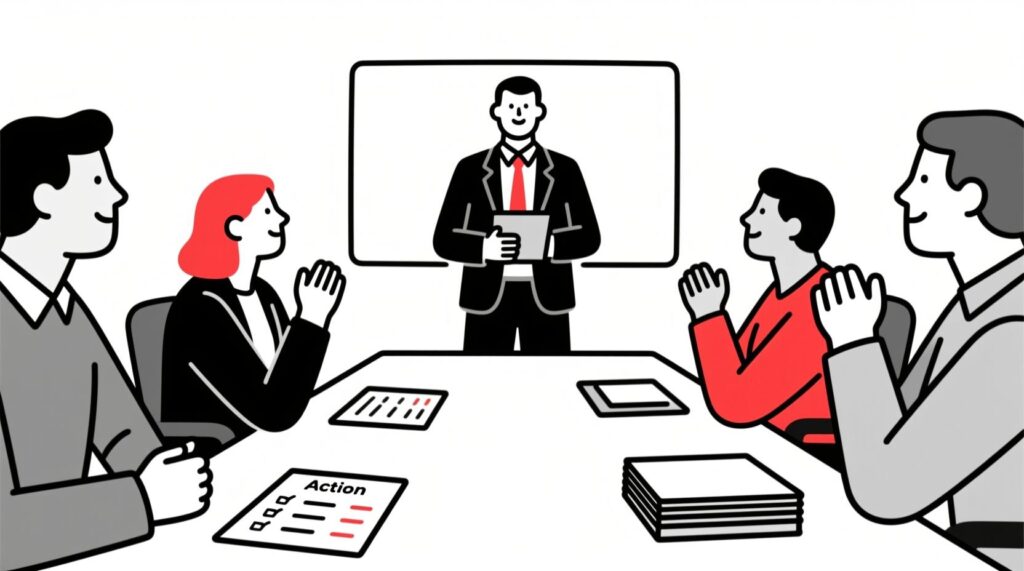
Conclusion: From Conversation to Commitment
This AI-powered system does more than save you an hour of tedious work. It’s a leadership framework.
It closes the accountability gap (Level 1), helps you see the strategic patterns in your team’s conversations (Level 2), and gives you the tools to become a more effective leader (Level 3). It builds a culture where talk leads directly to action, which is the engine of any successful mission.
For your very next team meeting, just try Level 1. You’ll be amazed at how it changes everything.
Canadian AI Guy’s Pro Tip: Adopting new tools is easiest with expert guidance. Our hands-on AI for Operations & Productivity workshops can train your entire team on this workflow, making it a seamless and powerful part of your organizational culture.
People Also Ask
1. What is the best AI tool for transcribing meetings?
For high accuracy and features like speaker identification, paid tools like Otter.ai and Fathom are excellent. However, the free, built-in transcription features on Microsoft Teams and Zoom are surprisingly good and a perfect place to start.
2. How do I handle sensitive or confidential information discussed in a meeting?
You must have a clear policy. For highly sensitive discussions (e.g., a specific HR issue), it’s best not to record or transcribe. For general confidential information, use enterprise-level AI tools that have stronger data privacy policies, and always ensure your team is aware of what is being recorded.
3. Can AI identify the tone or sentiment of a meeting discussion?
Yes, this is a perfect Level 2 task. After generating your summary, you could ask a follow-up question like, “Based on the transcript, what was the overall sentiment of the team during the discussion about the new budget? Were there any points of significant disagreement or consensus?”
4. My meetings are in both English and French. Can AI handle bilingual transcripts?
Many modern AI transcription services and models are multilingual and can handle multiple languages within the same conversation, often identifying the language being spoken automatically. It’s a feature worth testing with your specific tool.
5. How can I get my team to actually read and use the meeting summaries?
Make them the single source of truth. When a question comes up about what was decided, gently refer back to the summary: “Great question, let’s check the action items from Tuesday’s meeting to confirm.” When your team sees that the summaries are reliable and are the basis for all follow-up, they will quickly become an essential resource.
